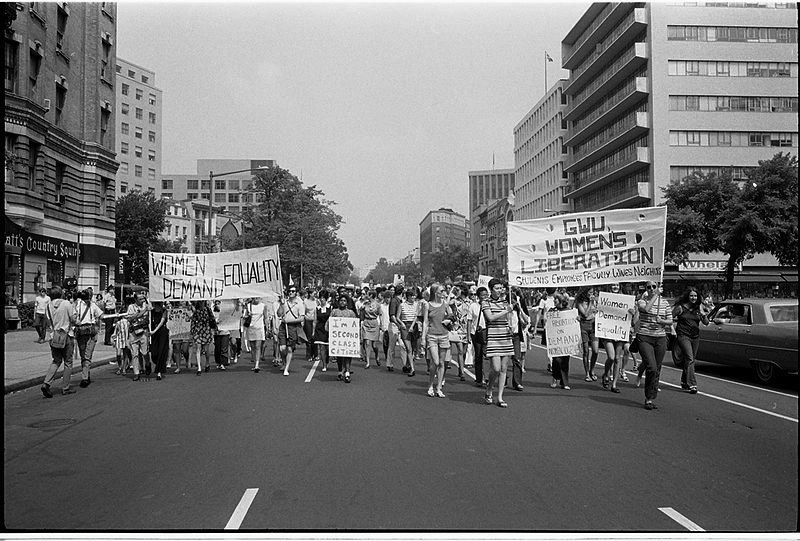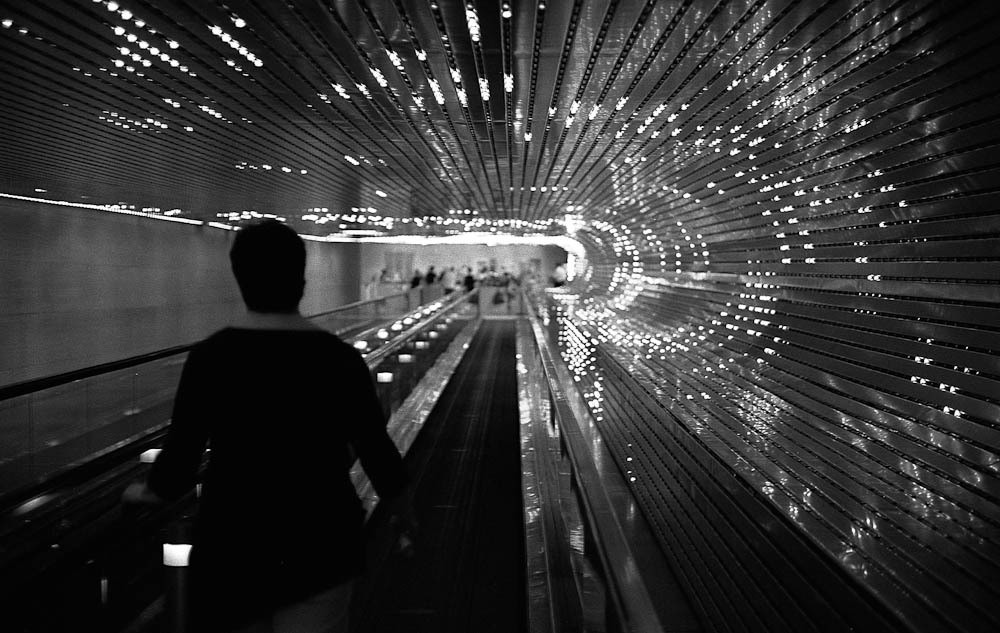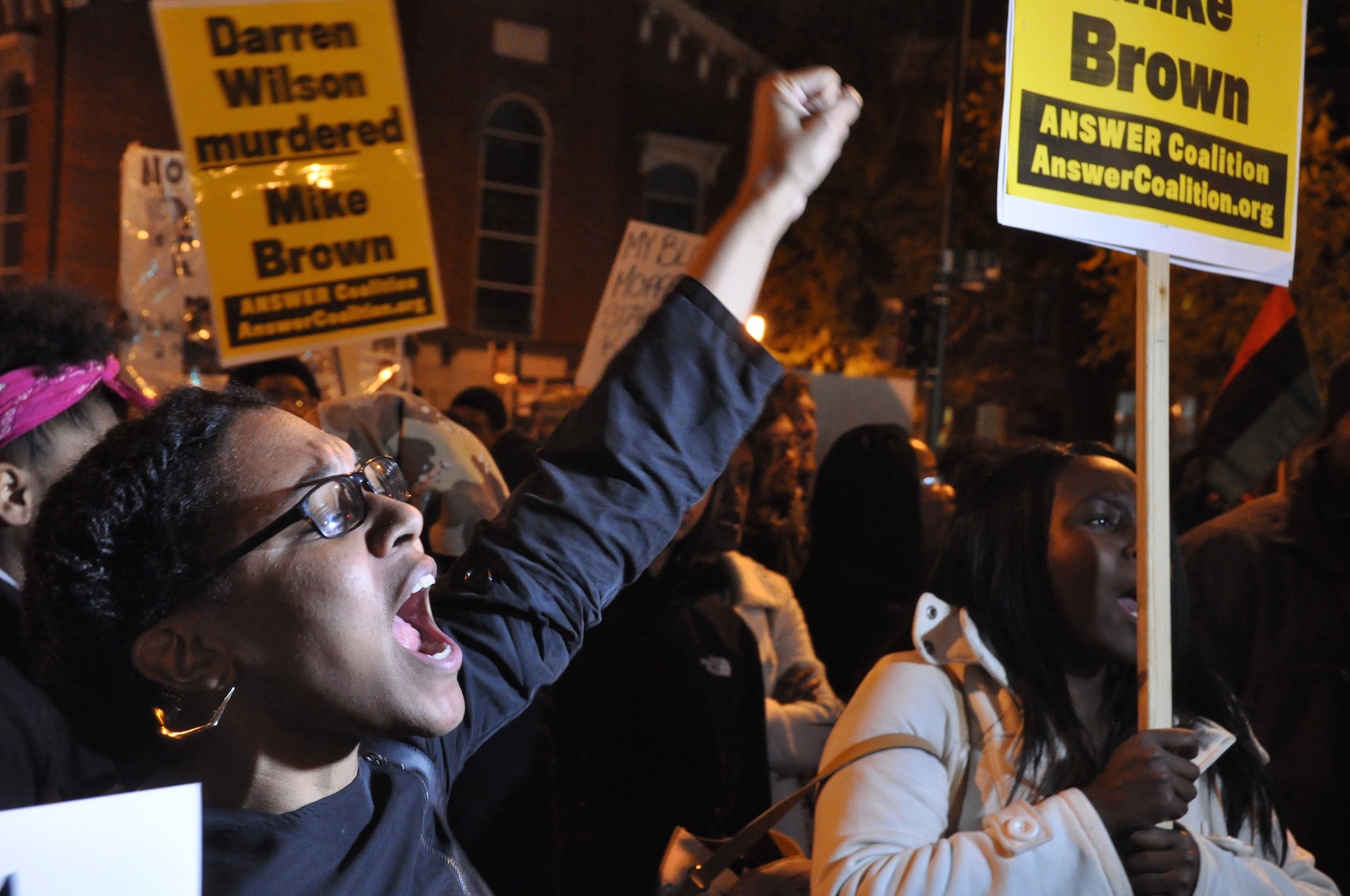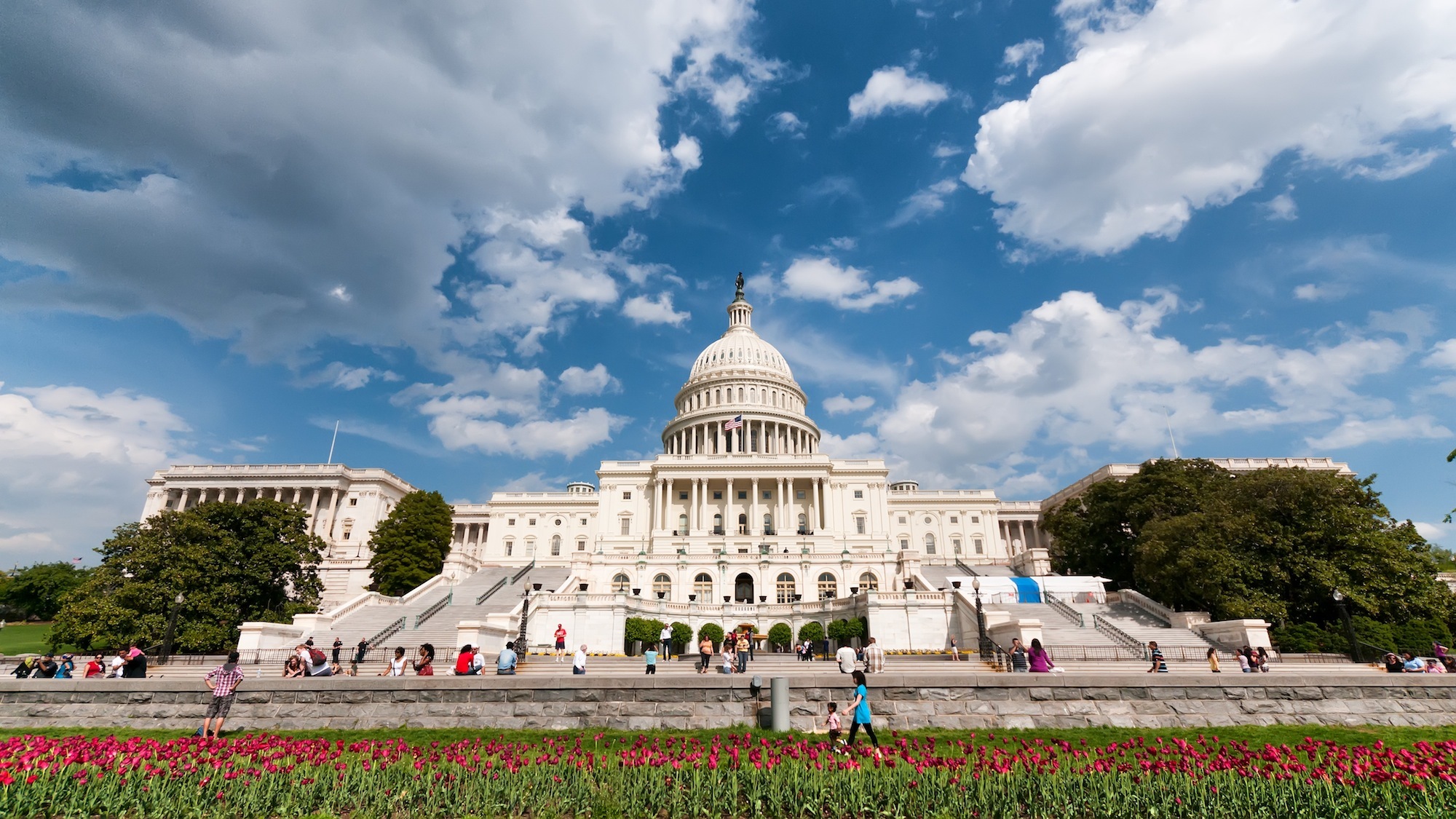On January 21, 2017, the day after Donald Trump’s inauguration ceremony, the Women’s March on Washington is estimated to draw 200,000 people to the nation’s capital in protest. Women — and men, children, trans people, genderqueer and non-binary individuals, and everyone in between — will gather to march against the Trump administration’s hateful rhetoric, and in support of myriad issues: from equal pay and reproductive rights, and how they intersect with race, gender identity, and socioeconomic class. It’s poised to be the nation’s largest inauguration demonstration, and it started with a Hawaiian grandmother’s Facebook status.
Today, even more high-profile women joined Gloria Steinem, Amy Schumer, Samantha Bee, and Jessica Chastain in pledging to march. They include: America Ferrera (chair of the March’s Artist Table, who delivered a knockout address at the Democratic National Committee), Hillary Clinton die hard Katy Perry, Scarlett Johansson, Cher, Zendaya, Julianne Moore, Kara Walker, Padma Lakshmi, Patricia Arquette, Hari Nef, Uzo Aduba, Danielle Brooks, Lea DeLaria, Diane Guerrero, Debra Messing, Frances McDormand, Olivia Wilde, Constance Wu, and countless others.
In the days following Trump’s election in November, we found solace, support, information, and motivation to move forward in the hearts and minds of our friends near and far. We stood with protesters as they poured into the streets of New York, and explored what Trump’s presidency might mean for indigenous people, the fashion industry, the environment. In a few weeks, we’ll journey to D.C. and stand with these friends and strangers to send a message of love and resistance to our orange leader on his first day in office. If you’re making the trip, too, here’s what you need to know:

BEFORE YOU GO
Let’s start with the basics:
Date: Saturday, January 21, 2017.
Time: Begins at 10 am, ends at 5 pm.
Starting location: The starting point will be the intersection of Independence Avenue and Third Street SW, near the U.S. Capitol. Here is a map — familiarize yourself with it.
Route: Although it is likely the march will head west on Independence Avenue, the organizers have yet to disclose the march’s official route. This is for security reasons, and because the organizers are still working with D.C. officials to determine which route is best for the anticipated number of marchers. The permit, according to D.C. police via the Washington Post, “says the rally will disperse at the southern part of the Ellipse near the White House, at Constitution Avenue between 15th and 17th streets NW.” The route will be updated on the Women’s March on Washington’s official website, but in the meantime, you should…
Register your attendance: In order for organizers and local authorities to plan for a safe march, they need to understand how many people to expect, and how these people will be traveling to D.C. Women’s March organizers have created an official registration page and a survey, and are asking all attendees to complete them both.
TRAVELING TO D.C.
If you haven’t already, you should determine how you’re getting to the Women’s March from wherever you live. The Cut recently published a detailed outline of transportation options, from planes, trains, and automobiles to every variation of chartered coach bus imaginable. Investigate, and select the best option for you — keeping in mind travel time, traffic, tolls, etc.
If a trip to D.C. just isn’t possible, check out the official list of affiliated sister marches in other American cities and around the world. Internationally, the Women’s March On London is taking the lead as one of the largest sister marches, thanks to support from Women’s Equality Party, Amnesty International, and Scientists for EU. New locations and information are being added daily. Better still, organize your own form of protest!

TRAVELING IN D.C.
Getting to D.C. is one thing; getting around D.C. is another. Before you arrive, determine where your point of arrival is in relation to the Women’s March’s starting location, and devise a route to get there. If you’re taking AmTrak, read up on Union Station. If you’ve claimed a spot on a bus, make sure you know where it’s dropping you off, where it will pick you up, and what time it’s departing once the march has ended.
If your drop-off point isn’t within walking distance of the Women’s March starting location you should probably take the Metro. If you’re not sure you’ll be able to march the entire route, or want to deviate from it, you should probably take the Metro. Here’s what you should know about it:
The D.C. Metro is not like the New York City Subway. Its lines are colors (Red, Orange, Blue, Green, Yellow, and Silver), and they do not run along a grid. The Metro station names do not always clearly indicate the streets or intersections where they are located. Determine whether you need busses or trains to get to the March, then familiarize yourself with Metro maps. Explore where the stop is located above ground, then learn its name. It’s helpful to have backup routes in mind should the line or station you need be closed. It’s also a good idea not to get off at the closest stop, because that will be the most crowded. Sometimes a little extra walking saves a lot of time.

Most Metro stations are primarily accessible by escalators rather than stairs. The number one thing you need to remember while using the escalators is “Walk LEFT, Stand RIGHT.” Do not stand on the left side of the escalator if you don’t plan to keep moving down it. A fellow commuter will yell this at you immediately lest you forget. Here are some more Metro etiquette tips CBS News published ahead of Obama’s first inauguration ceremony.
D.C. is one of the most handicap-accessible cities in America, and the Metro is a very accessible transportation system. Here is a list of helpful transportation resources for differently abled people.
If you need to take the Metro, we strongly advise you to purchase your SmarTrip in advance. Having lived in D.C. for four years, I can personally assure that top-up lines are always long, and I’ve never seen them longer and more unruly than during Obama’s first inauguration (I walked to his second but I’m sure it was just as bad). With a pre-purchased SmarTrip, you will breeze past this horrible buzz-kill of a feeding frenzy. Make sure you DO NOT purchase the One Day Inauguration Pass, because it will only work for the day before the Women’s March. We do, however, recommend buying a One Day pass. The Metro is not fixed fare like the NYC Subway; your fare is determined by how far you travel (this means you can’t load up a single card and pass back to friends). So better safe than sorry.
If you need to make a pit stop, try the Smithsonian Museums surrounding the National Mall. They’re large, they’re free, and they all have multiple entrances. So if one looks crowded, try going in a different door. Here’s a list of all the Smithsonians.

WHAT TO WEAR AND HOW TO PREPARE
Obama’s second inauguration, in 2012, was a mild 50 degrees. His first, in 2008, was a hellish tundra that didn’t rise above 20. Look at the weather, monitor its changes, and prepare your outfit accordingly. That means thick winter layers, comfortable shoes you don’t mind walking long distances, hats, gloves, scarves, the works. If you walk outside your house and you’re already chilly, you’re screwed.
UPDATE [January 16]: According to the Women’s March FAQ, not all backpacks are allowed at the march. Backpacks must be clear and transparent, and no larger than no larger than 17″x12″x6.” Bags, totes, and purses for small personal items should be no larger than 8″x6″x4″ (you can also bring 12″x12″x6″ plastic bag if you’d like to bring food). Some things we suggest putting in your clear, transparent backpack: water, food, toilet paper (you’re in a port-o-potty and even if they could, it’s doubtful your neighbor has a square to spare), hand sanitizer, hand warmers, a phone cable, and charger. Anticipate spotty service given so many people are in the same location.
If you’re making a sign, do it with friends! And use foam core rather than poster board, it’ll hold up better. Avoid using a pole or stick with your sign as these objects have the potential to be confiscated. Here are the official guidelines for those attending Trump’s inauguration ceremony, which include maps of the Capitol and a list of prohibited items. For any specific inquiries about what will be permitted at the Women’s March, consult its official FAQ.
MARCHING
Marches are super-affirming experiences where people come together and form a vibrant, visible union. There will also likely be other forms of protest you can choose to participate in while in D.C., from speakers to sit-ins and more direct-action demonstrations. No matter your flavor of activism, you should also expect…
A heavy police and security presence: This is a general daily reality in D.C. — where armored vehicles and Congressional motorcades regularly stop traffic and shut down entire streets. It will doubtlessly be amplified considering the number of people, but also considering recent security threats in other parts of the world. Which is why it’s important to…

KNOW YOUR RIGHTS
The American Civil Liberties Union has compiled a Field Guide for demonstrations and protests that’s available here. The ACLU has also developed a Mobile Justice app for on-the-ground-protestors, and those who witness instances of police brutality.
Law for Black Lives has an openly accessible Google Drive that compiles PDFs from the National Lawyers Guild, CUNY School of Law, and the Center for Constitutional Rights. This thorough information is available in English, Spanish, and Arabic.
Matador prepared a packing list for protesters including a first aid kit, goggles, and extra essential medication.
Check out the Electronic Frontier Foundation’s tip-sheet, which outlines how to interact with law enforcement should they seek to inspect or confiscate your phone.
Color Lines put together a protest preparation guide (and tips for how to handle the event of your arrest) for people participating in anti-police brutality demonstrations over the summer.
FURTHER READING
In spite of its cover gaff, the Washington Post‘s story on the March’s development — its growth from a Facebook status into a landmark demonstration — is an interesting read.
The New York Times recently considered the Women’s March on Washington in its Room for Debate series. Eight women with varying opinions weighed in regarding the March and its ambitions.
Credits
Text Emily Manning
Photography Bill Dickinson via Flickr Creative Commons
